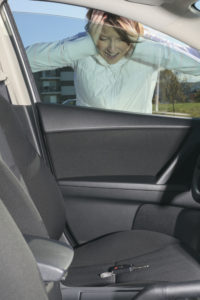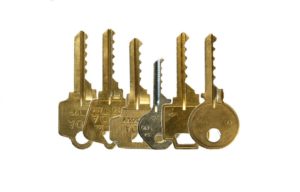Locked Out? Tips To Avoid A Lockout
The most frequent call a locksmith receives is from those who have locked themselves out of their house, office, or car. Are you locked out? Don’t worry! It happens to everyone at one time or another. Maybe your morning was unusually hectic, or maybe you want to use your key as usual, but this time it broke off inside the lock. Whatever your reason for being locked out, follow these tips to avoid a lockout.
Locked Out?
 Are you locked out of your home, business, or automobile? You need help, and you need help fast to get you back inside with a working key in your hand. The fastest way to get your door unlocked and a duplicate key made on the spot is by calling a qualified, knowledgeable, and skilled professional locksmith in Lenexa KS who will come to you in a hurry and not damage your locks or doors and won’t overcharge. Of course, if you are locked out because your key broke off inside the lock, you will need a locksmith immediately to come help extract the key and provide you with a duplicate on the spot.
Are you locked out of your home, business, or automobile? You need help, and you need help fast to get you back inside with a working key in your hand. The fastest way to get your door unlocked and a duplicate key made on the spot is by calling a qualified, knowledgeable, and skilled professional locksmith in Lenexa KS who will come to you in a hurry and not damage your locks or doors and won’t overcharge. Of course, if you are locked out because your key broke off inside the lock, you will need a locksmith immediately to come help extract the key and provide you with a duplicate on the spot.
Tips To Avoid A Lockout
Are you locked out? Follow the above tips to avoid a lockout, and you won’t have to worry about it ever again.
Routinely Double-Check
No one likes to be second-guessed, but when it comes to making sure you are never locked out, it’s important to always perform a routine double-check. Make it part of your daily habits to check if you have your keys in hand.
Use Reminders
Attach bright accessories or those that make noise to your key chain so they will be less likely to get lost. If they do show up lost, they will be easier to find. If losing your keys is a problem that happens frequently, attach a key locator device that will alarm when triggered that you are searching for your keys.
Trust a Spare Key to a Friend or Secure Location
If you live in an apartment or rent, you’re in luck since your landlord will probably have a duplicate copy of your key or has a master key system in place. Keep a duplicate key in a safe location. Leave a copy with a nearby neighbor you trust or a friend or family member who will be able to come to you quickly when you need it. Another good way to always have a key on hand and never get locked out is to hide a key in a secure location. Don’t ever stash a key in the obvious locations like under the front door mat, but find a spot out of view and out of the ordinary hiding places where you will be able to access it in time of need. On your vehicle, there are magnetic key storage cases that can be hidden somewhere on the underside of the car.
Find a Local Locksmith Before You Need One
The time to find a locksmith you trust and who is affordable is before you need their assistance. Research nearby locksmith Lenexa, and have the number of ones you trust to call in time of an emergency lockout. They will come to you quickly to open your door without leaving damage.
Go Keyless
If you lose your keys frequently, and it is becoming an ongoing problem, it would be a great idea to go keyless. Keyless entry systems are electronic and operate on a number combination, or even on a thumbprint entry. You will never need a key again so long as you remember the right combination.
If you follow the above tips to avoid a lockout, you will never need again hear someone ask, are you locked out?

 Bump keys are keys that are specially cut to take advantage of the mechanics of pin tumbler locks. They are often used by first responders and security personnel to gain entry when picking a lock is impractical or not possible. They are also used by criminals to break into offices and homes. Some research indicates that nearly every conventional business or home lock is susceptible to being opened by a bump key attack.
Bump keys are keys that are specially cut to take advantage of the mechanics of pin tumbler locks. They are often used by first responders and security personnel to gain entry when picking a lock is impractical or not possible. They are also used by criminals to break into offices and homes. Some research indicates that nearly every conventional business or home lock is susceptible to being opened by a bump key attack.